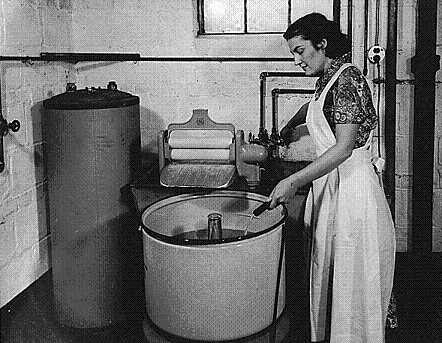Laundry
Laundry during this time period required lots of physical strength. People would heat water on their stoves, then pour that water into giant metal basins. Then they would add the clothes into the basins, rubbing them against the washboard to get out the dirt. The water would then drain into a bucket. Launders needed to have very strong arms to bring the heavy buckets of boiling water to the metal basins and to carry the heaped piles of wet laundry out to the clothesline. The process took two days to complete, depending on the amount of laundry to be done (“How to Do Laundry…”).

Having someone else to do the household’s laundry was seen as a sign of wealth, as the very wealthy had servants to do all the washing and drying. The middle class wanted this service as well, so send-out laundry locations began popping up all over the country. Families could ship their dirty laundry to these businesses and the workers would do all the hard work for them (“A Brief History…”). Before Chinese immigration, these laundry businesses were composed of only female laundresses, doing the tasks that were deemed feminine, just as they would in the home. There were a range of qualities for these send-out laundry stores, some doing simple washes and dries to larger loads and more delicate cloth. This was cheaper way of getting one’s laundry done that hiring a laundress or getting a machine for the house, and it saved a lot of time, too.